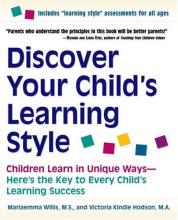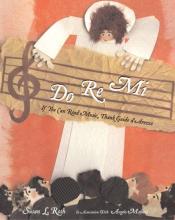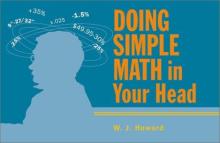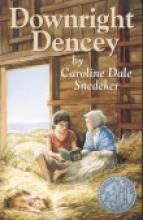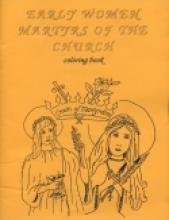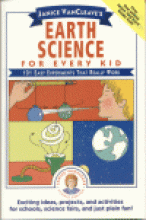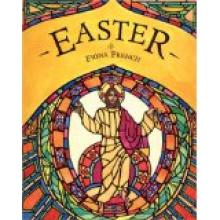No name
Discover Your Child's Learning Style
If you have been wondering what is the key to getting your reluctant learner excited about math, science, or any other academic subject, Discover Your Child's Learning Style may be what you have been looking for. Written to the parents of public, private, or homeschooled students, the authors' goals are for the parents to get on their child's "team", have the child take the learning profile (learning assessment test), and coach him to learning success. Not just a book for students from an institutionalized setting, the authors make references throughout the text to various types of school settings.
With a combined experience of 45 years, these authors are dedicated to helping children succeed in their love of learning. They believe that by tapping into the child's learning style, the child will naturally love to learn. The child's learning style includes the child's talents, interests, modality, environment, and disposition. One of the best things about this book is that the authors recognize that you, the parent, are your child's primary teacher. They hope to have a positive effect on children's attitudes toward learning through the parents' powerful influence and involvement.
The authors begin by encouraging parents to develop a proper attitude. For example, parents need to take an active role in the child's education. They should also learn to "celebrate" the child for who he is and not criticize the child for who he is not. They encourage parents to model good behavior for their children. They encourage strengthening the bonds between children and their parents in additional ways as well.
After you have your child take the learning style profile, you will learn about the five different aspects covered in the test: disposition, talents, interests, modality, and environment. The various categories for disposition include someone who performs, produces, invents, relates/inspires or thinks/creates. The areas of talent include music, math-logic, mechanical reasoning, spatial, word-language reasoning, and seven more. In assessing the child's interests, the authors note that the child's interests may differ at home than from those at school. Modality refers to the type of learner your child is. This is what we most often associate with learning style. Is the child an auditory, visual, or kinesthetic learner? These can help assess the child's learning environment for improvements. Some factors to consier include: does the child prefer quiet or noise, laying down or sitting at a desk, a bright or dim light? You can see that the authors' definition of learning style is broader and more variable than most.
Because of the lengthy and detailed descriptions of the various dispositions (perform, produce, invent, relate/inspire or think/create), the child or parent should easily be able to identify which disposition is closest to the child. Since they are presenting material associated with the child's learning style, their perspective is from an educational standpoint. They begin by describing a person who fits that disposition. For example, a performer is a person who is "bright, witty, and outspoken." As adults, they are entertainers, actors, athletes, trial lawyers, etc. They then go on to discuss the learning characteristics, the preferred setting for learning, what that child contributes to a situation, the areas of growth, the relationship conflicts between a child of one disposition and a teacher of an opposing disposition, the ideal curriculum, homework helps, and motivators. At the end of each chapter, they also offer a quick reference chart with the program emphasis, preferred activities, helpful materials with exact titles for specific subjects, and teaching techniques. As parents, we need to also keep in mind that sometimes we can adapt the materials we already own by employing different teaching techniques.
If you are beginning to be overwhelmed with all the terminology or aspects of a child's learning style, don't be. There are lots of charts and graphs that clearly explain what should work best for your child. There is an incredible amount of information in this book, including putting the plan to work, dealing with special needs children, pages of recommended resources, and much more. Whether you are having difficulty with teaching your child or not, Discover Your Child's Learning Style has much to offer and much to digest. Since one of our goals as parents is to have our children reach their full potential, this book may help you to see your child in a totally new light.
Do Re Mi
A dear blog reader recommended this picture book on the life of Guido d'Arezzo, the Benedictine monk who came up with the system for writing music one thousand years ago–the same system we still use today. I requested it via inter library loan since our library does not own the title.
I liked the way the life of the monks is described, but I wonder about the illustrations... in the book the monks look more like Dominicans in white habit... Honestly, my wish is for the book to be re-ilustrated by another artist! Still, a very nice cultural picture book and... you may not mind the style of the illustrations!
Doing Simple Math in Your Head
What fun! Doing Simple Math in Your Head compiles all sorts of amazing mathematical tricks into one diaper-bag-sized book, ready for those odd moments spent in waiting rooms and restaurants. Have you ever needed to figure a tip quickly, without resorting to writing on the napkin? Have you ever wondered how others can convert fractions to decimals so quickly? Have you ever worried that your receipt was not computed correctly but didn't have a calculator available to check it quickly? After working through this book, you will have an arsenal of tricks available to do these things in your head, quickly and accurately.
According to Mr. Howard, "being able to do problems in your head is basically being able to simplify. When you can do that, the rest is easy." He leads us through three chapters, elegantly and simply teaching us how to look at things differently so that they become easier. The book begins with an Introduction that describes how these methods are different from what we learned from our schoolbooks. This is followed by three chapters titled "Making Things Easier", "Problems and Solutions", and "Background: Basic Arithmetic". The book closes with an Index and a Glossary of technical "math" words that are not necessarily used in the book but which should be understood. The book is organized with subtitles at the top of each page, allowing you to skim quickly to find the topic you need or to browse until you find an interesting topic to study. Spending a few hours practicing the techniques taught in this book will make practical, everyday math much easier!
Downright Dencey
This book was donated for review by Bethlehem Books.
Early Women Martyrs of the Church: Coloring book
Earth Science for Every Kid
In the Van Cleave tradition, this book presents 101 experiments that are simple, yet informative, and can easily be performed in the home. The book covers seven major segments: Earth in Space, Rocks and Minerals, Crustal Movement, Erosion, Atmosphere, Weather and Oceans. Some experiments are designed to demonstrate, with simple objects, properties of the earth and its components such as "how the composition of the Earth affects its motion" and "how the speed and direction of air affect falling rain." These type of experiments generally cover things which can't be directly experimented with but can be understood through other things. Other experiments determine actual properties by experimenting with salt, water, ice, etc. to more directly understand how they work.
Easter
Easy As 1, 2, 3: A Catholic Overview of Science For the Primary Grades
This program provides families who like to use living books with a Catholic framework from which to study science. It is not a textbook but rather is 40 pages, of which approximately half are outlines, that are three hole punched and ready to go into your notebook. The parent that uses this will find the eleven units of science outlined very handy for creating their own program and clearly laid out so that they can tuck personal notes and activities into their notebook using the 40 pages as their point of organizing. The manual begins with an explanation of how the outline can best be used and includes suggested resources and supplies. Each units focus (animals for example) is broken down by grade and includes a listing of the main headings that should be studied (e.g. Mammals, habitats and others in grade 1, amphibians, migration and others in grade 3). The author also includes a "find out" paragraph that includes special topics that parents should bring out.
Easy as 1,2,3
This is the second edition of a 1998 volume by CHC with the same title. While it has an all-new layout, much of the content remains the same.

